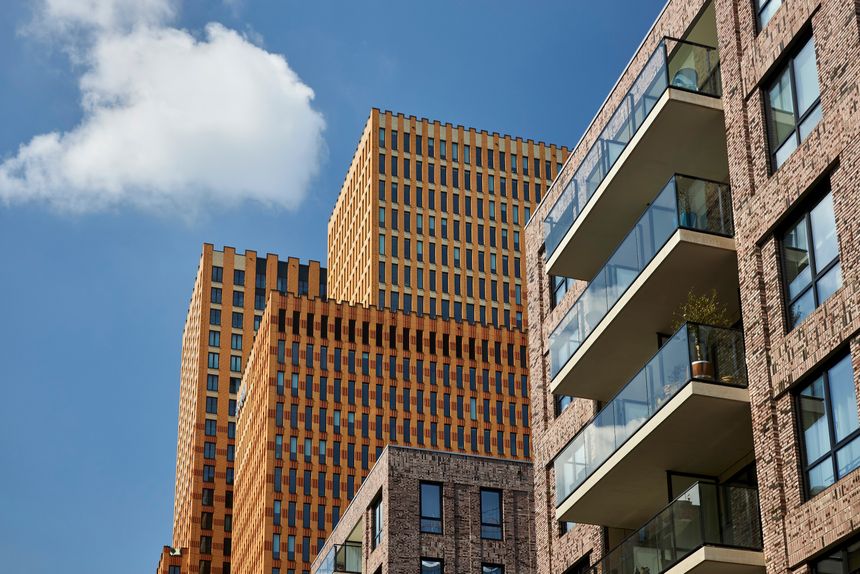The Consultation
The Department for Levelling Up, Housing and Communities (DLUHC) launched a consultation on 09 June 2022 on the Higher-Risk Buildings (Descriptions and Supplementary Provisions) Regulations ("the Regulations"). Higher-risk buildings ("HRBs"), following the Hackitt review, have been identified as those in need of a more stringent regime for building safety at the design, construction, and occupation stages.
The consultation sought views on the definition of 'building' and whether it should align with the definition in the Building Act 1984 (s. 121: any permanent or temporary building, and, unless the context otherwise requires, it includes any other structure or erection of whatever kind or nature (whether permanent or temporary)). Further, the type of buildings to be included and excluded from the new regime was considered, as the Governments intention was to include care homes and hospitals but exclude buildings such as prisons, hotels and military premises. Other aspects such as measuring height and storeys were also considered.
The Regulations
The Regulations in their draft form were published on 06 March 2023 ("the draft Regulations") due to come into force 06 April 2023 in England. The definition of Higher Risk Building (at 120D of the Building Act, as inserted by s31 of the Building Safety Act ("BSA")) is a building that:
is at least 18 metres in height, or has at least seven storeys, and:
contains at least two "residential units" (being a dwelling or any other unit of living accommodation which therefore includes student accommodation);
is a care home; or
is a hospital.
Secure residential institutions (e.g. prisons), hotels and military premises are excluded from this definition. It is significant that (2) and (3) within the definition do not apply at the occupation phase because there are different regulations which apply to these types of building.
Higher Risk Buildings throughout their lifecycle:
The Gateway Regime has been widely discussed as part of the proposed new building control regime for HRBs, its aim being to ensure rigorous compliance checks take place throughout the lifecycle of a buildings.
The regime is as follows:
Gateway one: the planning application stage
Fire safety must be considered at the planning stage for higher-risk buildings. These provisions are already in place.
Gateway two: the pre-construction/building control application stage
The Government consultation 'on implementing the new building control regime for higher-risk buildings and wider changes to the building regulations for all buildings' ("the Building Control Consultation") ran from July to October 2022. It sets out that before work can commence, an application must be made to the Building Safety Regulator ("BSR") for building control approval. Further, it details that the BSR could have 12 weeks to approve or reject a building control application. A potential 12-week delay could prove problematic to the construction/development industry and contracts will need to be carefully drafted to allow for fluctuation in labour and materials, at the outset.
Gateway three: once construction is complete
If the application is approved, the Building Control Consultation provides that the BSR will carry out inspections during construction both at agreed stages as well as without notice. During this time there are strict information collation and maintenance requirements that the Principle Accountable Person must comply with regarding the higher-risk building.
Before the HRB can be occupied, a completion certificate must be obtained (s76 of the BSA), by application to the BSR. If the BSR is satisfied that the building work complies with all applicable building regulations, it will issue the completion certificate.
Section 77 of the Building Safety Act provides that it is a requirement for the Principal Accountable Person ("PAP") to register the building with the HSE (see our previous article on registration https://realestate.howardkennedy.com/post/102iacb/hse-confirms-opening-of-registration-for-higher-risk-buildings).
During Occupancy
Thereafter, the Principal Accountable Person is responsible for managing fire safety risks during the building's lifetime, as part of the more stringent regime for HRBs. The PAP must maintain specific information about each HRB – the golden thread of information. Section 88 of the BSA obliges the PAP to keep this information up to date, to ensure accuracy.
Section 89 of the BSA allows the Secretary of State, by regulations, to make provision about the type and form of information the PAP must collate, as well as to whom the information must be provided. Maintaining the golden thread of information will ensure that freeholders and landlords have information readily available for anyone who might need it. The Building Control Consultation requests input from industry on the type of information to be contained within the golden thread as well as whether it must be regularly reviewed to ensure its accuracy.
Comment
The Regulations provide clarity on the definition of higher-risk buildings. However as regards the practical application of this definition, we must await the outcome of and any Government response to and/or subsequent regulations following the Building Control Consultation which closed in October 2022.
It is anticipated that the Building Safety Regulator, HSE and Government will assist PAPs to ensure that their role and responsibilities are clear as the new stringent regime for HRBs is gradually implemented.
If you need advice regarding Higher-Risk Buildings or your roles and responsibilities under the Building Safety Act, please contact Bhavini Patel or Mark Pritchard, the joint Heads of Howard Kennedy's Building Safety Group.


/Passle/57bd9d773d94740310eec5b7/MediaLibrary/Images/2025-12-19-11-51-08-089-69453c2c9b03a4fc92652a15.jpg)
/Passle/57bd9d773d94740310eec5b7/SearchServiceImages/2025-12-17-15-20-33-035-6942ca415555b955e430f91b.jpg)
/Passle/57bd9d773d94740310eec5b7/MediaLibrary/Images/2025-12-02-18-57-16-499-692f368ccb7c9dfade943813.jpg)